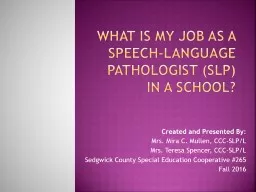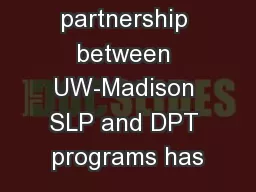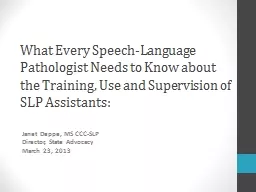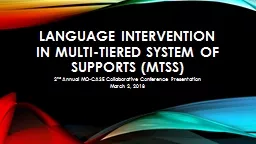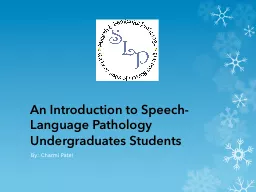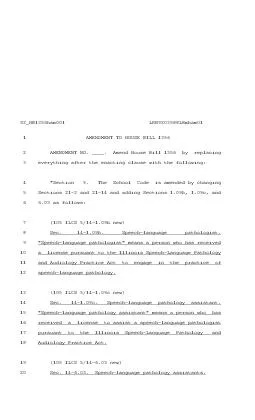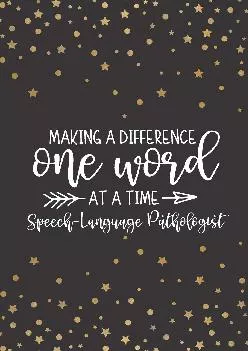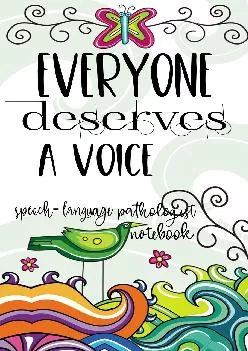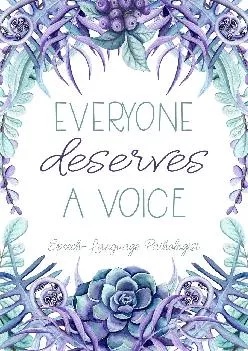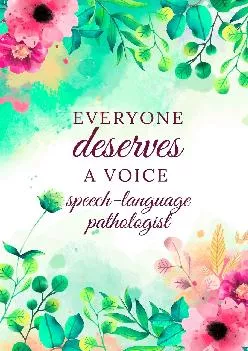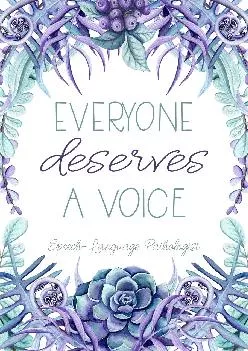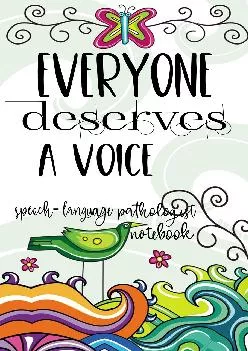PPT-What is my job as a Speech-Language Pathologist (SLP) in a school?
Author : contera | Published Date : 2020-06-23
Created and Presented By Mrs Mira C Mullen CCCSLPL Mrs Teresa Spencer CCCSLPL Sedgwick County Special Education Cooperative 265 Fall 2016 Initial License for Speech
Presentation Embed Code
Download Presentation
Download Presentation The PPT/PDF document "What is my job as a Speech-Language Path..." is the property of its rightful owner. Permission is granted to download and print the materials on this website for personal, non-commercial use only, and to display it on your personal computer provided you do not modify the materials and that you retain all copyright notices contained in the materials. By downloading content from our website, you accept the terms of this agreement.
What is my job as a Speech-Language Pathologist (SLP) in a school?: Transcript
Download Rules Of Document
"What is my job as a Speech-Language Pathologist (SLP) in a school?"The content belongs to its owner. You may download and print it for personal use, without modification, and keep all copyright notices. By downloading, you agree to these terms.
Related Documents

